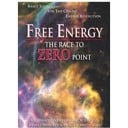
Investigating the World's Elements
Gold, though seemingly abundant in our lives, is surprisingly scarce on Earth. Despite its rarity, we've used it across civilizations, from ancient Egypt to modern smartphones. Its journey is fascinating, starting from stellar explosions to ending up in our pockets. While its allure has sparked gold rushes and fueled greed, it also holds the potential for a sustainable future through recycling and technological advancements. So, next time you touch gold, remember its remarkable journey and the potential it holds for the future.
Hydrogen, the most abundant element in the universe, holds both the potential to save and destroy us. While its fusion powers stars and offers a clean energy source, its misuse in hydrogen bombs poses a grave threat. Currently, producing hydrogen often involves fossil fuels, but green hydrogen made from renewable energy offers a promising solution. However, challenges like cost and storage remain. Despite its limitations, hydrogen's versatility, from powering vehicles to storing renewable energy, makes it a key player in our quest for a sustainable future.
Helium, once abundant, is now running low due to past mismanagement and its crucial role in various fields. From cooling super magnets to fueling potential future fusion energy, its uses are diverse. The US, once a major supplier, sold its reserves, while new sources like lunar mining are being explored. While balloons are symbolic, helium's true value lies in its scientific and technological applications. Preserving it requires responsible use and exploring alternative sources.
Nitrogen, vital for life yet also fueling explosions and environmental woes, has a complex history. Its invention for fertilizer doubled the human population, but overuse leads to water pollution and climate change. The search for life beyond Earth analyzes nitrogen pollution in distant atmospheres as a potential sign of civilization. Cryonics, aiming for immortality, uses liquid nitrogen to preserve bodies for future revival. Despite its dark sides, nitrogen's cycle represents a comforting return of elements to the planet, reminding us of our interconnectedness with life and death.
Though hidden away in bones, DNA, and even the tips of matches, phosphorus plays a vital role on Earth. This versatile element, existing in several forms, is never found free. Instead, it binds with other elements to form phosphates, crucial for life. As the backbone of DNA and RNA, phosphorus carries our genetic code. Yet, its importance extends beyond biology. Phosphorus finds uses in fertilizers, detergents, and even fireworks, creating vibrant displays in the night sky. While essential, its abundance can be deceiving. In excess, it can harm water ecosystems and human health.



